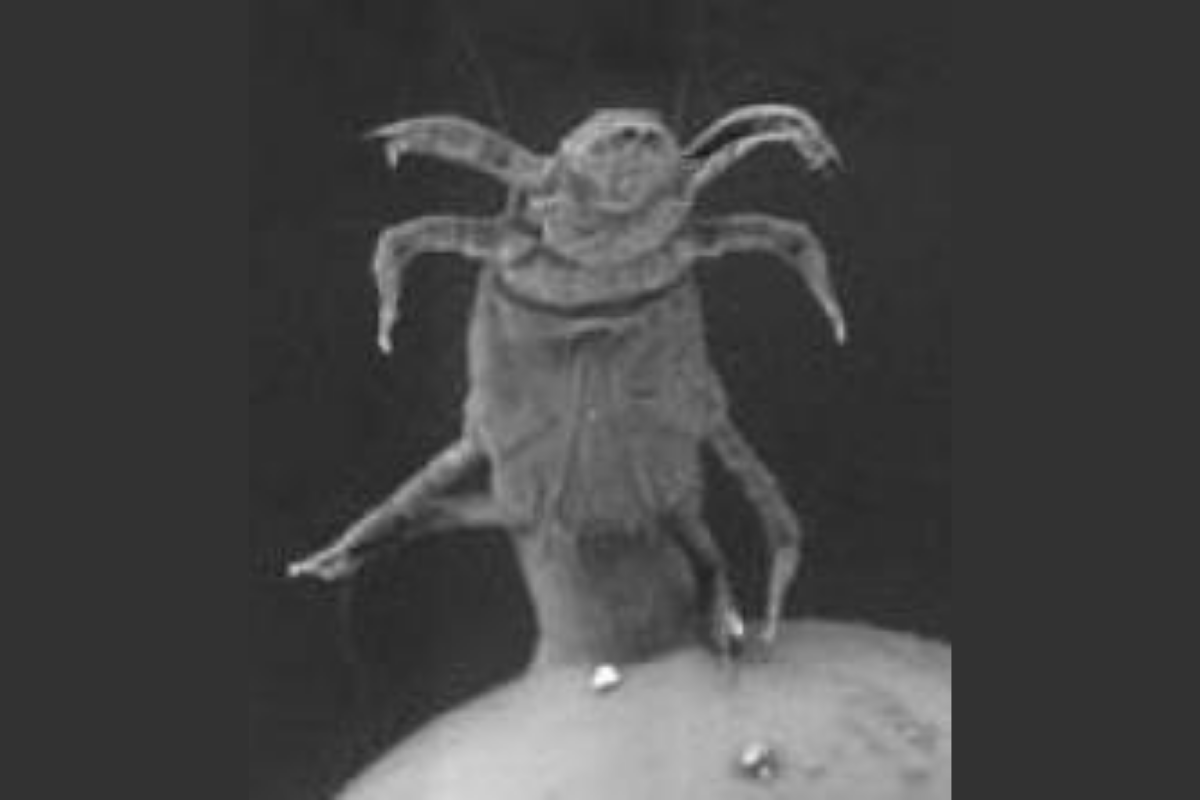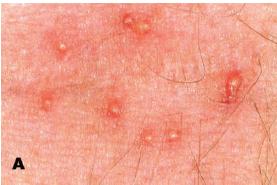Following swarms of the 17-year Brood X cicada hatch, Washington, D.C. has a new pest in town.
As was first reported by The Washington Post, residents of the capital city were now privy to so-called itch mites feeding on the eggs laid by the billions of Brood X cicadas that emerged in spring 2021.
Itch mites, known scientifically as Pyemotes herfsi, are microscopic pests nearly invisible to the human eye whose bites cause red, itchy, and painful welts. One type, the oak leaf gall mite, was most recently responsible for a 2004 outbreak in Missouri, Nebraska, and Texas and is believed to have been the first known incident in the United States, according to a study conducted by the Department of Entomology at Kansas State University. During that time, an “unrecorded number of patients visited the city hospital” with “pruritic rashes,” or itchy skin associated with dry skin or other bug bites.
Itch mites, or oak leaf gall midge, typically feed on midge larvae like those left behind by the Brood X cicadas, but the Illinois Department of Public Health (IDPH) notes that they can accidentally bite people when looking for food.
“Mites usually need about four hours on your body before they bite. Once the mite’s regular food source is gone from the leaves, usually in late summer, the mites drop from the trees,” wrote IDPH.
“Oak leaf gall mites are so small that they can float on the wind, and pass through window or door screens and loosely-woven clothing."
Typical itch mite bites measure about 2 centimeters and are “itchy and painful when scratched, often resulting in secondary bacterial infection.” Those who have been bitten may develop red welts that resemble chigger bites on the neck, face, or arms — not the usual leg area typically associated with chiggers. Itch mite welts make pimple-like lesions after around 12 hours and can be present for up to two weeks, noted IDPH.
Experts recommend not scratching the bites, as scratching can lead to a secondary infection. Rather, treat rash areas with anti-itch creams or oral antihistamines to alleviate itching. While itch mites are present in Washington, D.C., it is recommended that residents avoid sitting under or near areas with oak trees present and to be aware of brown and crusty edges on the leaves of oak trees as that is typically an indication of an infestation.


